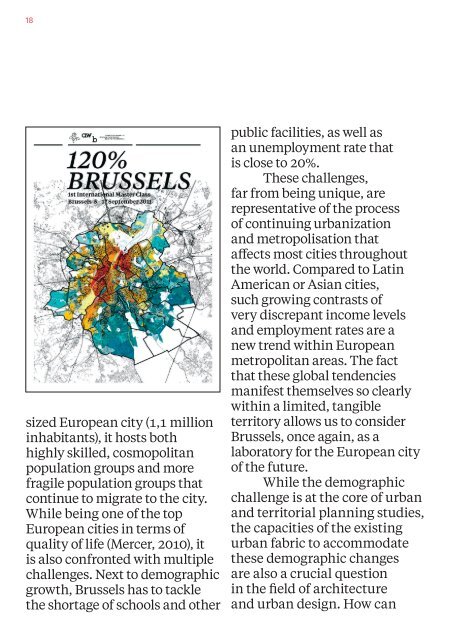Master Class 120% Brussels
Create successful ePaper yourself
Turn your PDF publications into a flip-book with our unique Google optimized e-Paper software.
18<br />
sized European city (1,1 million<br />
inhabitants), it hosts both<br />
highly skilled, cosmopolitan<br />
population groups and more<br />
fragile population groups that<br />
continue to migrate to the city.<br />
While being one of the top<br />
European cities in terms of<br />
quality of life (Mercer, 2010), it<br />
is also confronted with multiple<br />
challenges. Next to demographic<br />
growth, <strong>Brussels</strong> has to tackle<br />
the shortage of schools and other<br />
public facilities, as well as<br />
an unemployment rate that<br />
is close to 20%.<br />
These challenges,<br />
far from being unique, are<br />
representative of the process<br />
of continuing urbanization<br />
and metropolisation that<br />
affects most cities throughout<br />
the world. Compared to Latin<br />
American or Asian cities,<br />
such growing contrasts of<br />
very discrepant income levels<br />
and employment rates are a<br />
new trend within European<br />
metropolitan areas. The fact<br />
that these global tendencies<br />
manifest themselves so clearly<br />
within a limited, tangible<br />
territory allows us to consider<br />
<strong>Brussels</strong>, once again, as a<br />
laboratory for the European city<br />
of the future.<br />
While the demographic<br />
challenge is at the core of urban<br />
and territorial planning studies,<br />
the capacities of the existing<br />
urban fabric to accommodate<br />
these demographic changes<br />
are also a crucial question<br />
in the field of architecture<br />
and urban design. How can


















